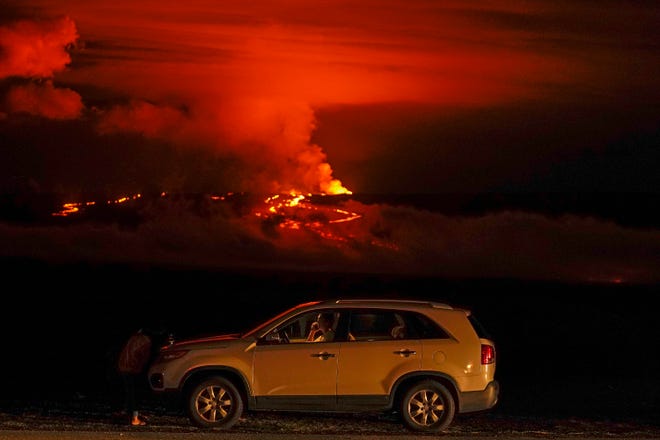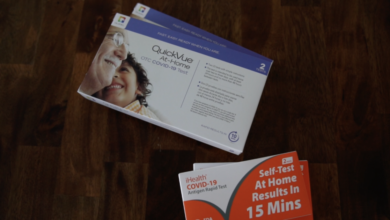
Scientists said on Tuesday that two active Hawaii volcanoes — Mauna Loa and Kilauea— have stopped erupting, allying fears among people who’ve lived through past eruptions.
The U.S. Geological Survey's Hawaiian Volcano Observatory issued two separate statements Tuesday announcing that both Mauna Loa and Kilauea are "no longer erupting."
"Is this a coincidence? Maybe. Maybe not. The volcanoes are not directly connected, but might 'feel' one another via stress effects," USGS Volcanoes said Tuesday.
Alert levels for both volcanoes were reduced from watch to advisory by the USGS. But the observatory will "remain vigilant" and watch for "changes that might indicate renewed activity."
Mauna Loa, the world's largest volcano, started erupting for the first time in nearly four decades on Nov. 27 and posed a threat to a major highway on Hawaii's Big Island that connects the east and west sides of the island.
Mauna Loa's eruption brought thousands of onlookers and concerned local officials after lava got within 1.7 miles of the crucial highway before the lava supply ceased on Dec. 10, according to USGS.
CULTURAL SIGNIFICANCE: Native Hawaiians find a spiritual connection to Mauna Loa eruption: 'Our deities are alive and well'
'THAT'S GOOD NEWS FOR US': Mauna Loa lava no longer an immediate threat to major Hawaii highway
Kilauea, which is considered to be Mauna Loa's smaller counterpart, had been erupting since September 2021 and its lava supply halted on Dec. 9, USGS said. Kilauea's lava previously destroyed more than 700 homes on the Big Island in 2018.
Many onlookers were able to view both volcanoes erupting at the same time in Hawaii Volcanoes National Park, which was a rare event.
"It (Mauna Loa) was a beautiful eruption, and lots of people got to see it, and it didn't take out any major infrastructure and most importantly, it didn't affect anybody's life," said observatory scientist-in-charge Ken Hon during a briefing Tuesday.

Following Mauna Loa's eruption, Hawaii County officials opened a one-way mitigation route to manage lava-viewing traffic. The route will close on Thursday, Hawaii County Civil Defense Director Talmadge Magno said.
In addition to Mauna Loa's lava supply halting, the observatory said volcanic tremor and earthquakes connected to the eruption have also "greatly diminished."
"Spots of incandescence may remain near the vent, along channels, and at the flow front for days or weeks as the lava flows cool," the observatory's activity summary said. "However, eruptive activity is not expected to return based on past eruptive behavior."
While lava supply to Kilauea's Halemaʻumaʻu lava lake ceased, the observatory said there is a possibility that the eruption may resume or a new eruption may start.
According to Hon, there's generally a three month "cooling off" period before scientists consider an eruption to be over. But there's been no history of a Mauna Loa rift eruption pausing and restarting, Hon said.

Contributing: The Associated Press
Source link





